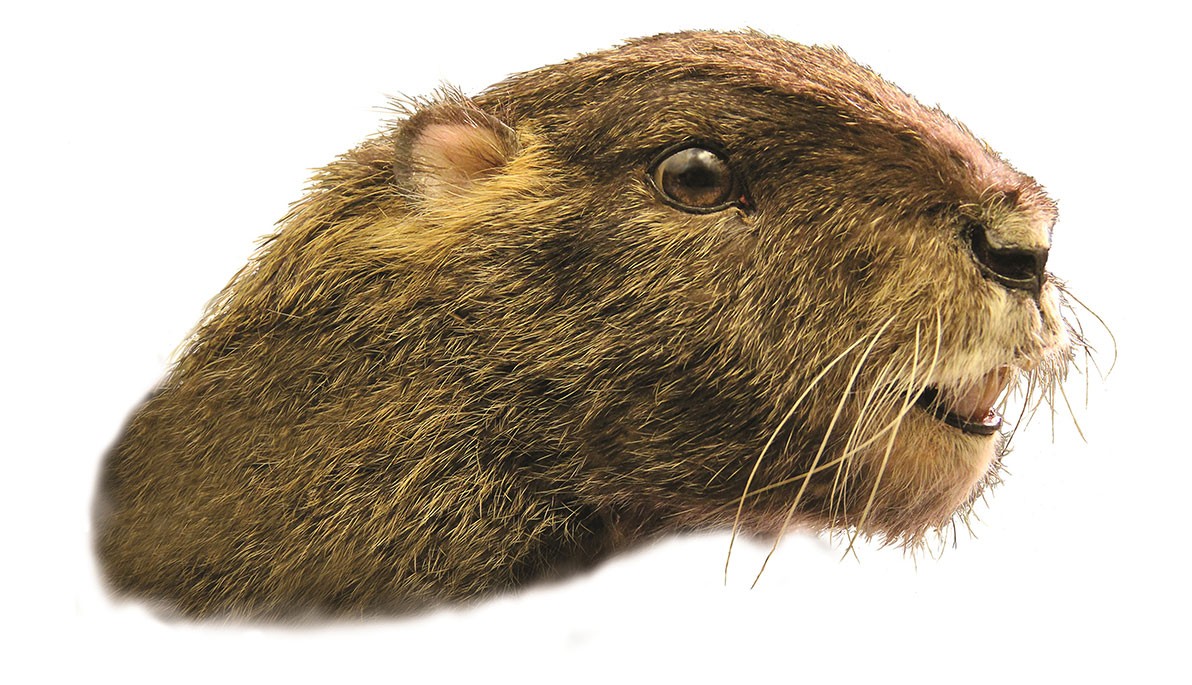News
Beyond the Bones: The “Tail” of an Ancient Beast
July 31, 2023
Pictured: An illustration of the prehistoric mammal Vintana
Across land, air, and sea, this summer New York Tech News is highlighting some of the recent studies published by the College of Osteopathic Medicine’s Department of Anatomy. The “Beyond the Bones” series is a snapshot of just a few of the projects helping to shape scientific understanding about evolution.
In this latest installment, a researcher helps to identify a tail bone that once belonged to an ancient, groundhog-like mammal.
Approximately 200 million years ago, Antarctica was attached to South America, Africa, India, and Australia in a single “supercontinent” called Gondwana. Paleontologists have long wondered about the unique mammals that only lived on this ancient supercontinent, including a particularly elusive group called Gondwanatheria, for which few fossils have been identified.
Associate Professor of Anatomy Simone Hoffmann, Ph.D., is part of a team that is helping to “unearth” significant clues about these mysterious animals. In a May 15 study published in the journal Cretaceous Research, Hoffmann and Senior Curator at the Denver Museum of Nature and Science David Krause, Ph.D., describe the first postcranial remains (skeletal remains apart from the skull) of a gondwanatherian called Vintana. Their findings provide new insights into early mammalian evolution.
Vintana lived about 66 million years ago in what is now Madagascar, roaming the earth at the same time as the dinosaurs. Its name means “lucky” in the Madagascar language of Malagasy, referring to the fossil’s fortunate discovery. Bearing a resemblance to today’s groundhogs, Vintana weighed about 19 pounds and is the largest known mammal from the southern hemisphere’s Mesozoic era (252-66 million years ago) to date.
Previously, Vintana was only represented by a fossilized skull, which Hoffmann, Krause, and colleagues detailed in a 2014 study. Several years later, in 2020, the researchers uncovered the nearly complete skeleton of a strange, possum-sized gondwanatherian, dubbed the “crazy beast” (Adalatherium). Until now, Adalatherium’s fossilized skeleton represented the only postcranial remains in the gondwanatherian fossil record.
Now, Hoffmann and Krause’s new study presents additional gondwanatherian postcranial evidence and reveals that a vertebra fossil from the Cretaceous of Madagascar was once a Vintana tailbone.
Using the micro-computed tomography (micro-CT) scanner in NYITCOM’s Visualization Center, the researchers scanned the vertebra and compared the virtual surface files to the tail vertebraefrom Adalatherium. They found that the vertebra was very similar to that of Adalatherium, the second largest Mesozoic mammal from Madagascar, but much larger—nearly 40 percent larger, to be exact. This size put it solidly within the range to classify it as Vintana.
“While the remains represent only an isolated vertebra from Vintana’s larger skeleton, its discovery provides key information about the gondwanatherian lineage,” says Hoffmann. “Gondwanatherians had uniquely short tail vertebrae, and this new discovery tells us that the tail of Vintana was even wider and shorter than the already stubby tail of Adalatherium.”
Learn more about innovative research from the Department of Anatomy’s esteemed faculty.



_Thumb.jpg)

